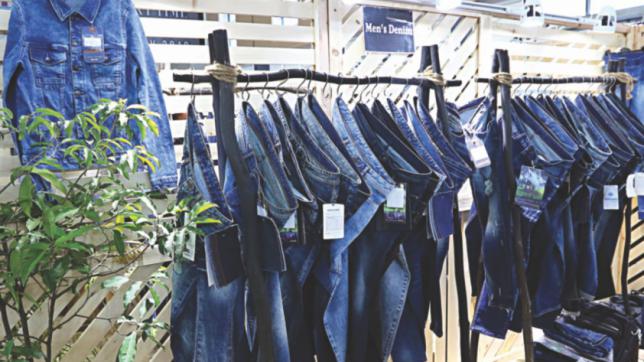Published in The Daily Star on February 21, 2018

Denim exports to the US, Bangladesh’s single largest export destination, sank 31.48 percent year-on-year to $295.04 million in 2016 because of the re-emergence of the legendary American denim industry.
Although data for 2017 is yet to be released, exporters said the figure would be more or less the same or even lower.
It is not just Bangladesh, denim exports from China, the largest apparel supplier to the US, declined as well in 2016: by 36.30 percent to $627.30 million, according to data from the Bangladesh Denim Expo, a non-profit organisation that arranges fair on denim products twice a year.
Shipments from Mexico, the second largest supplier, crashed 42.05 percent to $555.49 million.
The overall decline in denim imports by the US means Bangladesh’s position remains the same: at the third spot, after China and Mexico.
The slump in denim exports from Bangladesh comes at a time when sales of denim in the US are on the rebound again as athletic leisurewear goes out of trend after years.
In 2016, denim sales in the US grew 4 percent to $13.5 billion, according to the NPD Group, an American market research company.
The US government has adopted a policy that it will give a lot of financial incentives if anybody opens a garment factory, especially for specialised apparel items like denim, said Mostafiz Uddin, managing director of Denim Expert, a Chittagong-based denim producer and exporter.

“So, many entrepreneurs reopened their factories,” he said, adding that there is a growing tendency among consumers in the US to opt for American made jeans.
Bangladeshi entrepreneurs supply denim products to major global retailers, including Levi’s, Diesel, G-Star RAW, H&M, Uniqlo, Tesco, Wrangler, s.Oliver, Hugo Boss, Walmart and GAP.
Globally, 2.1 billion pieces of denim are sold annually, according to the US International Trade Commission.
In 2014, the size of the global denim market stood at $56.20 billion. By 2020, the global denim market will reach $64.1 billion; Bangladesh’s share is forecasted to reach $7 billion by the end of 2021.
The production capacity of the 31 denim mills in Bangladesh is more than 40 million yards a month against the demand for nearly 70 million yards.
The rest of the demand is met through imports from countries like China, India, Pakistan and Turkey.
Automation or production by the robots is another cause of concern for the countries like Bangladesh, Vietnam, India and Pakistan as many US entrepreneurs started denim production with robots, which bring down costs substantially.
Longer lead-time is another challenge for Bangladesh. In contrast, the US manufacturers can supply in a shorter time, Mostafiz said.
“We need more innovation in production, marketing, designs and trend to export more to not only the US but to other countries as well.”
 CPD RMG Study Stitching a better future for Bangladesh
CPD RMG Study Stitching a better future for Bangladesh



